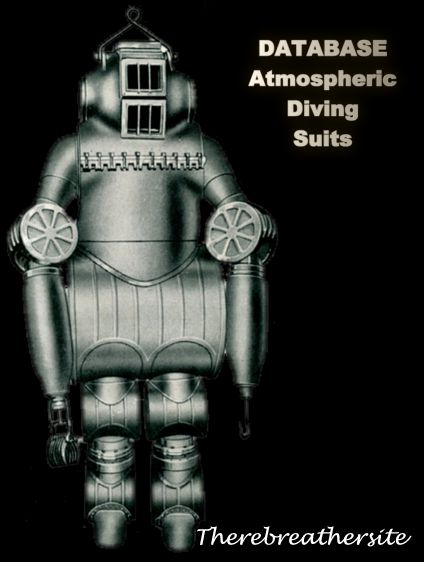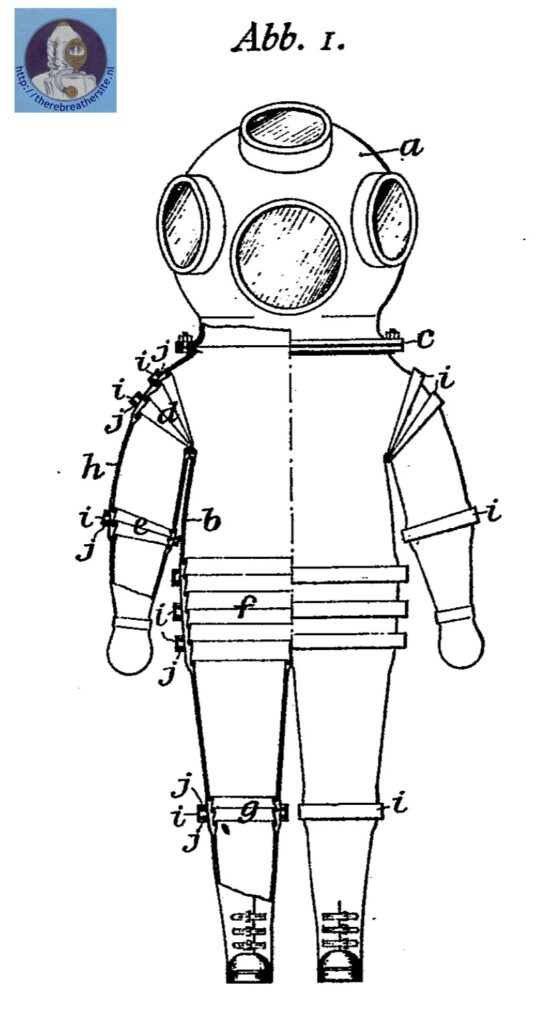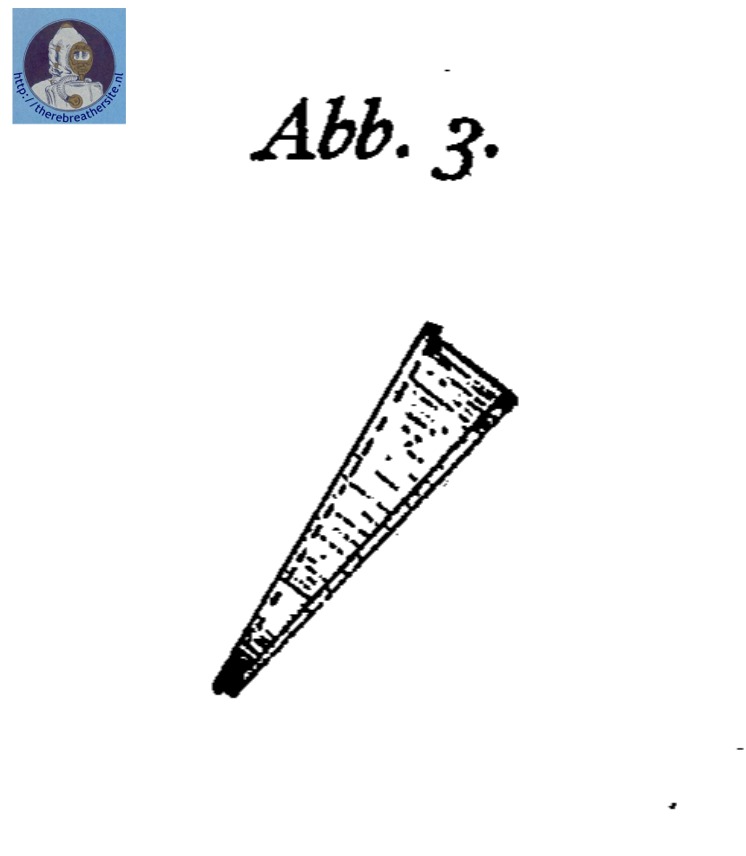
Once again, the concept emerges of cladding a metal suit with a rubber seal. Ahrens sees the problem that the rubber will be pressed between the hinge points with great force by the water pressure. Ahrens suggests solving this by keeping the rubber at the hinges away from the moving transition parts.
PATENT CLAIMS: Armoured diving suit with movable articulated links, which is enclosed in a waterproof and airtight elastic fabric casing, characterized in that the casing is kept at a certain distance from the armour at all those points of the armour where articulated links are located. z. Armoured diving armour according to claim i, characterized in that the casing (h) is enclosed in rigid rings (i) which are connected to the casing by springs (j) regulating the distance of the casing from the articulated links of the armour.



Armoured diver. The present invention relates to a diver’s armour with movable articulated limbs, which is enclosed in a sheath of water and airtight elastic material, preferably rubber. The new and unique arrangement is that the protective cover is kept at a certain distance from the armour at all points of the armour where articulated links are located. This eliminates the danger of the protective cover being forced by the external water pressure into the joints of the articulated links of the armour and being damaged.
With such diving armour, the diver can work under ordinary air pressure without regard to the depth of the water, so he is no longer exposed to the well-known diving illnesses that occur when overpressure is used in a diving suit. The possibility of keeping the breathing air in the diving suit at atmospheric pressure gives the diver the advantage of being able to work at greater depths.
The drawing shows an exemplary embodiment of the invention.
Fig. 1 shows half of the diver’s armour in vertical section, the other half in external view. Figs. 2 and 3 show structural details.
The diving suit consists of a metal armour with an envelope of waterproof and airtight elastic material, preferably rubber, which provides the diver with the necessary mobility by means of articulated links and is so strong that at the water depths considered for the diver’s work, the external water pressure can be withstood without damage in order to maintain the respiratory air at atmospheric pressure.
The elastic shell of the metal armour requires protection against external water pressure at the points where it lies above the articulated joints of the armour. Without such protection there would be a danger that the shell would be forced by the external water pressure into the joints of the links. This would not only affect the mobility of the articulated joints, but there is also the possibility that the cover could be damaged during the movement of the articulated joints, thus cancelling the airtight seal of the shell. -The present invention remedies these dangers by keeping the protective cover at a certain distance from the shell where the articulated joints are located. For this purpose, the protective cover is enclosed by closed or open rigid gates, which are connected to the protective cover by springs. The tension of the springs is adapted to the external water pressure prevailing in the water depth considered for the diver’s work.
In the example shown in the drawing, d is the shoulder joint, e the arm joint, f the hip joint and g the knee joint. h is the shell enclosing the armour in an airtight and watertight manner; i are the rings holding the protective shell k at the joints at a distance from the armour. The connection between the rings i and the protective cover h is mediated by the springs j. Between the legs the protective cover h is kept so short that the necessary distance regulation is self-evident.
The diver’s hands and feet are movable in the tank in the usual way. The cover h ends in gloves for the hands, which allow the use of the tools. At the feet the cover h also closes the tank watertight and airtight.
The armoured diving armour described does not require any additional weighting because its own weight is sufficient to cause the diver to sink to the required depth.

Therebreathersite was founded by Jan Willem Bech in 1999. After a diving career of many years, he decided to start technical diving in 1999. He immediately noticed that at that time there was almost no website that contained the history of closed breathing systems. The start for the website led to a huge collection that offered about 1,300 pages of information until 2019. In 2019, a fresh start was made with the website now freely available online for everyone. Therebreathersite is a source of information for divers, researchers, technicians and students. I hope you enjoy browsing the content!
